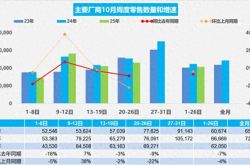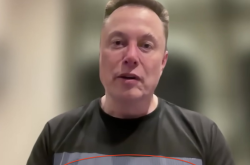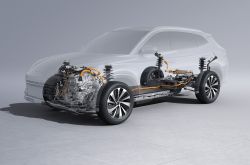Robot Stumbles, Unitree Technologies Redirects Blame: Who Will Shoulder the Responsibility for the Future of Human-Robot Coexistence?
![]() 04/23 2025
04/23 2025
![]() 673
673
In the era of rapid technological advancement, every leap in robotics captures the public's imagination. Such was the case with the world's first humanoid robot half marathon, which recently concluded amidst online uproar over a "side story" on the track.
On April 19, the track in Yizhuang, Beijing, buzzed with excitement as the inaugural humanoid robot half marathon kicked off. Twenty robot teams, each with their own "participant," embarked on this grueling 21.0975-kilometer journey. This race was no ordinary feat; it tested robots in real, complex dynamic environments, assessing their core capabilities in motion control, environmental perception, and energy management. The robots had to endure long distances while maneuvering ramps, turns, and other challenging terrains—a task fraught with difficulty.
Among the participating robots, Unitree Technologies' G1 humanoid robot garnered significant attention. However, during the race, multiple online videos surfaced showing the G1 robot falling while running, sparking heated discussions among netizens. Comments sections were flooded with questions about the robot's stability, and speculations ran rampant.
As the public awaited Unitree Technologies to "take the blame," the company swiftly issued a statement, shifting the blame onto the user. It stated that while the participating robot was their product, the algorithm was developed by the customer. This analogy to selling a phone and then blaming the manufacturer when the user modifies the system resonated deeply, pushing public opinion to a crescendo.
This raises an important question: Is Unitree Technologies truly innocent in its haste to distance itself, or does it reflect a deeper industry turmoil?
Behind the Event: The Quest for Robotic Progress
This world's first humanoid robot half marathon represented a bold innovation in robotics. Held in Yizhuang, Beijing—a land brimming with technological vitality and innovation—it provided a unique backdrop for the race.
The 20 participating teams comprised diverse entities, including enterprises, universities, and research institutions. Each brought their unique interpretation and pursuit of robot technology, showcasing meticulously designed robots on the track. These robots varied in form and function, akin to a diverse robotic feast. Some stood nearly 1.8 meters tall, boasting high-power integrated joints that demonstrated robust power and smooth movements; others, compact in size, displayed agility and quick response capabilities on the track.
The 21.0975-kilometer course was a rigorous test of the robots' endurance and stability. The race route was challenging, encompassing not just flat asphalt roads but also complex surfaces like potholed roads, cracked pavements, stone paths, grasslands, and gravel roads, including long gentle slopes and short steep slopes with a maximum gradient of ≤9°. This required robots to possess not only excellent motion control but also precise environmental perception abilities to adapt in real-time to different terrains. Every step forward was supported by complex algorithms and countless technical optimizations.
This race was extraordinary; it was more than just a competition but a profound exploration of robot technology. It provided a platform to showcase robot capabilities, allowing people to witness the potential of robots in real-world scenarios. It also offered valuable practical data and experience for researchers and developers in related fields. As the organizing committee stated, they hoped this race, guided by the core issues of future industry applications, would inspire people to overcome challenges and jointly promote the development of Chinese humanoid robots.
Unitree "Stays Out of It": What Lies Beneath?
Unitree Technologies emphasized in its statement that it did not participate in the race, citing valid reasons. Currently, preparations for live-streaming humanoid robot fights are in full swing, and for Unitree Technologies, this is a prime opportunity to showcase its technical prowess and innovative achievements.
In live-streaming fights, robots must demonstrate precise motion control, quick response capabilities, and strong decision-making abilities in complex confrontational environments, placing stringent demands on technology. Every detail is crucial to the live stream's success and the company's image, necessitating significant investments in manpower, resources, and time.
Similarly, marathon race preparations were cumbersome. With limited resources, Unitree Technologies had to choose, prioritizing the live-streaming fights.
Although Unitree Technologies did not participate in the race, the G1 robot was well-represented on the track. Since its launch last year, the G1 humanoid robot has garnered global attention for its advanced technology and performance, finding applications in various fields like scientific research, education, and technology exploration. Customers have leveraged their creativity and technical skills to conduct in-depth research and secondary development on the G1 robot. In this marathon, multiple independent teams used Unitree's robots.
However, different teams varied in technical expertise, algorithmic thinking, and development directions, leading to varied robot performances during the race. It's akin to the same car being driven by different drivers; some prioritize speed and excitement, while others focus on stability and safety, resulting in vastly different driving performances.
Thus, robot performance is not solely dependent on the robot itself; user operation and development play a crucial role.
Behind the Falls: Analyzing the Dilemma of Robot Technology
The robots' falls during the marathon were not coincidental but exposed underlying issues in current robot technology across multiple key areas.
First, let's consider the motion control algorithm, akin to the robot's "nervous system," commanding every move, from simple leg lifts and arm swings to complex posture adjustments under different terrains. In complex real-world scenarios like marathons, motion control algorithms face stringent demands. However, existing algorithms are far from perfect. For instance, when climbing slopes, the algorithm must accurately calculate leg force and angle to ensure steady ascent while considering center of gravity shifts to avoid instability. Yet, many robots exhibit disordered steps and fluctuating speeds on slopes, indicating that the algorithm is not yet mature in handling such situations.
Similarly, during turns, the algorithm must precisely control the robot's left and right leg movements based on factors like turning radius and speed to achieve smooth maneuvering. However, many robots show noticeable stuttering or deviation from the predetermined trajectory, highlighting room for improvement in motion control flexibility and accuracy.
Next, we turn to hardware stability, the "foundation" for robot operation. In marathons, robots endure prolonged high-intensity movements, testing hardware durability and reliability. Joint components bear immense pressure and friction, leading to wear and loosening, affecting motion accuracy and stability. Some robots experienced joint overheating during the race, reducing performance and potentially causing hardware failures like circuit short circuits.
Battery endurance is another critical issue. The marathon course spans 21.0975 kilometers, requiring sufficient power to maintain operation. However, many current robots have limited battery life, necessitating frequent battery changes during the race, delaying time and increasing the risk of malfunctions during swaps.
Moreover, the hardware cooling system is vital; prolonged high-intensity movements generate significant heat. Timely heat dissipation is crucial to prevent performance decline or hardware damage.
Environmental perception ability cannot be overlooked; it's how robots interact with the external environment. The marathon track is complex, with flat roads, potholes, cracks, gravel roads, and potential obstacles. Robots rely on advanced sensors like cameras, LiDAR, and ultrasonic sensors to perceive surroundings in real-time and transmit data to the control system for decision-making.
However, current sensor technology has limitations. For example, in low light or adverse weather, camera imaging quality can be affected, impeding accurate surroundings recognition. While LiDAR provides high-precision distance information, it is costly and susceptible to interference in complex environments.
Additionally, robots' ability to process and analyze environmental information needs improvement. Extracting useful data from vast sensor information and making reasonable decisions poses a significant challenge.
Human-Robot Coexistence: Navigating the Future
Despite developmental challenges, robot technology holds promising long-term prospects. With continuous breakthroughs and integrations in artificial intelligence, big data, sensors, and related technologies, robots' application potential in various fields will be further explored.
In industrial manufacturing, robots will become more intelligent and flexible, collaborating closely with human workers to complete complex tasks.
In medicine, surgical robots will become more precise and intelligent, assisting doctors in complex surgeries, reducing risks, and improving success rates. Rehabilitation robots will offer personalized and efficient training programs to aid faster recovery.
In logistics and distribution, robots will handle cargo handling, sorting, and packaging, significantly enhancing efficiency and reducing labor costs. With autonomous driving technology maturing, logistics robots can achieve autonomous delivery, further optimizing processes.
The trend of human-robot collaboration will become increasingly evident. Future robots will not be isolated but partners capable of natural interaction and close cooperation with humans. They will understand human language, expressions, and gestures, responding promptly to needs and instructions. In household services, robots can assist with cleaning, elderly and child care, providing convenience.
However, as robot technology advances, attention must be paid to potential issues like employment structure adjustments, ethical dilemmas, and safety risks. Enterprises must formulate reasonable policies and regulations to guide technology towards societal benefit, making robots a driving force for progress.
Final Reflections
Although the world's first humanoid robot half marathon has concluded, discussions on robot technology continue. While the Unitree robot's fall incident was disappointing, its "staying out of it" statement highlighted the crucial role of users in robot applications.
This incident serves as a wake-up call, urging the industry to face challenges head-on. Setbacks should not deter faith in robot technology's development. Every challenge presents an opportunity for progress, and every exposed problem lights the way forward. Only by confronting problems, daring to innovate, and taking responsibility can the industry achieve true breakthroughs, enabling robots to better serve humanity.
In the future, how will the robot industry break through technical bottlenecks? How will enterprises uphold responsibility and commitment in a competitive market, fostering a good brand image? These questions merit deep consideration.








